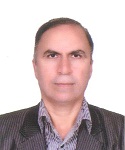| 个人简介 | |
|---|---|
 Dr. Mohammad Esmaeil Asadi Golestan Agricultural and Natural Resources Research and Education Center (GANRREC), Iran |
|
| 标题: Permanent raised bed cropping system, a new approach to increase crop water productivity | |
| 摘要: Agriculture is the sector with by far the largest consumptive water makes use of 70% of all water withdrawn from groundwater and surface water resources, three times more than 50 years ago. By 2050, the global water demand of agriculture is estimated to increase by a further 19% due to irrigational needs. Agriculture already competes with peoples’ everyday use and environmental needs, particularly in the areas where irrigation is essential, thus threatening to literally dry up ecosystems. In addition, in the coming years, climate change will bring about enormous and partly unpredictable changes in the availability of water. The solution to these problems is apparently simple: less water must be consumed, treated waste water should be reused, and whatever water is available should be used as productively as possible. Crop Water Productivity (CWP) can be defined in two ways including bio-physical water productivity (kg of produce per unit of water consumed; kg.m-3) and economic water productivity (value of produce per unit of water consumed; USD per m3 of water). For these reasons, permanent raised bed (PRB) cropping system that would increase CWP and reduce the ecological impact of cropping systems in well-watered environments was introduced. The beginnings of PRB system, technique of planting on narrow raised beds with irrigation water confined to furrows between the beds, arose by farmers in the Yaqui Valley in northwestern Mexico in 1970s. In PRB methodcropping systems has been changed from the previous practice of planting most crops (especially wheat) on the flat with flood/basin irrigation to the establishment of all their crops (including wheat) on no till raised beds using furrow irrigation. These crops are planted in rows on top of the beds (two to six rows), which normally measure 70–100 cm wide between bed centers. We are confident that it can play an important role in rise of CWP. The role bed-planting may play in areas where water is a limiting factor has yet to be determined, but applications of PRB, residue retention, and tied ridges may increase its feasibility. The great advantages for PRBare the tremendously enhanced field access, which facilitates controlling weed and other pests, handling nutrients, reducing tillage, and managing crop residues. Rapid drainage of irrigation water from the bed surface avoids the negative effects of ponding and associated waterlogging. It avoids deoxygenating of the upper rooting zone for extended periods, and allows rapid access to the bed surface for mechanical or hand activities after irrigation. | |
| 简介: I am Mohammad Esmaeil Asadi, an Iranian citizen, finished my Ph.D degree in Integrated Water Resources Management, at Asian Institute of Technology (AIT), Thailand in Aug 2001. Currently I am working as a principle research scientist in Golestan Agricultural and Natural Resources Research and Education Center (GANRREC) that is governmental center which is situated in Golestan Province north part of Iran near Caspian Sea. My research interests are as follows: 1- Irrigation/drainage systems design, development and performance evaluation 2- Conservation Agriculture (CA), Soil and water management of upland crops 3- Development/validation/applications of water management, and crop models 4- Precision Farming 5- Climate change, agrometeorology and cropwatch In addition, I am an official instructor of CA courses for experts and researchers in Ministry of Agriculture of Iran. I am also instructor of some courses like irrigation systems, soil water and plant relationship, climatology, water quality and so on in national universities (2002-2018). Moreover, as a senior researcher of GANRREC from 1989 to 2017, I had followed a well balanced approach in discharging my 3 functions such as teaching, research and outreach activities. My academic functions include teaching regular conservation agriculture systems and soil and water courses per year. The regular courses include Irrigation and Drainage Engineering and Management; Land and Water Conservation, water quality, climatology and so on. From 2012 to present, I have handled CA courses at all over the country for farmers, experts and researchers. On the research side, I have conducted sponsored research projects in Iran related to CA, soil erosion, irrigation management and non-point source (NPS) pollution monitoring and modeling. I had also supervised/graduated 10 Doctoral and 20 Master advisees at national universities of Iran and abroad. The outputs from these research undertakings are reflected in my 4 published books, 16 International Journal papers and 35 International Conference papers published since finishing my doctoral degree in 2001. Google Scholar shows that as of June 2017, I had more than 200 citations with H Index of 7. | |
